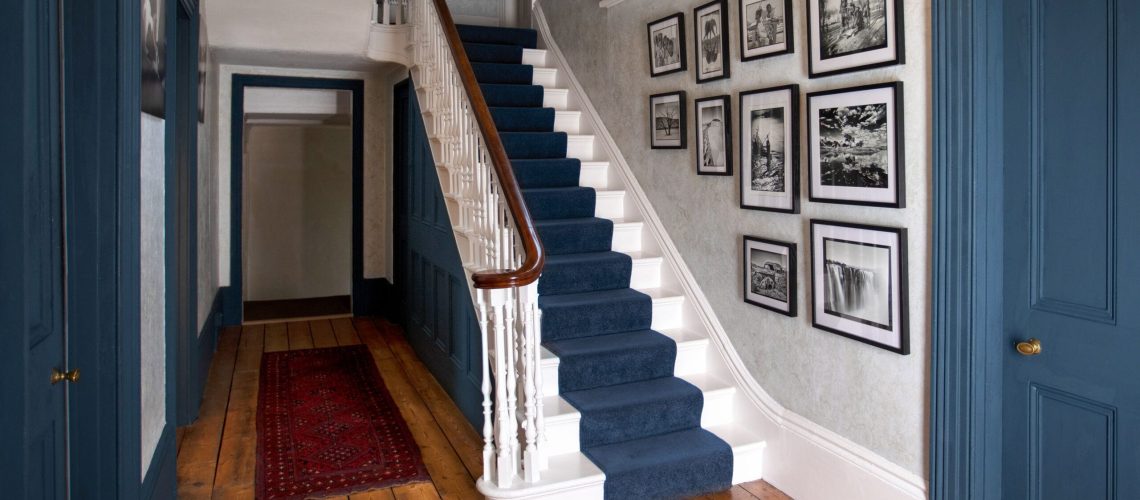Stairways and handrails are integral components of a home, providing access between different levels and ensuring the safety of occupants. Home inspectors, equipped with a discerning eye for safety, play a crucial role in identifying potential hazards associated with stairs and handrails. In this comprehensive guide, we’ll explore the most common safety issues that home inspectors frequently uncover, shedding light on the importance of addressing these concerns for a secure and accident-free home.
1. Uneven Stair Risers and Treads
Issue: Inconsistencies in Stair Height (Risers) and Depth (Treads)
One of the most prevalent safety issues discovered by home inspectors is uneven stair risers and treads. Inconsistencies in the height and depth of stairs can lead to tripping hazards and increase the risk of accidents, especially for those unfamiliar with the staircase.
Why It Matters:
Uneven stairs can cause individuals to misjudge their steps, leading to trips and falls. Ensuring uniform riser and tread dimensions is essential for creating a safe and predictable staircase.
2. Insufficient Lighting on Staircases
Issue: Poorly Lit Staircases and Walkways
Inadequate lighting on staircases and walkways is a common safety concern identified by home inspectors. Insufficient illumination can make it difficult for individuals to navigate stairs safely, especially in the dark.
Why It Matters:
Poor lighting increases the risk of missteps and accidents on staircases. Installing adequate lighting fixtures and ensuring proper illumination along staircases is crucial for promoting safe navigation.
3. Worn or Slippery Stair Surfaces
Issue: Worn or Slippery Stair Treads
Home inspectors often uncover worn or slippery stair surfaces during their examinations. Treads that have lost their traction due to wear or are inherently slippery pose a slipping hazard, particularly when ascending or descending.
Why It Matters:
Slippery stairs can lead to dangerous falls. Replacing worn treads or applying non-slip surfaces is essential for maintaining a safe and secure staircase.
4. Missing or Inadequate Handrails
Issue: Absence of Handrails or Handrails in Poor Condition
Handrails are essential for providing support and stability while using stairs. Home inspectors frequently identify staircases with missing handrails or handrails in disrepair, compromising the safety of those using the stairs.
Why It Matters:
The lack of handrails or poorly maintained handrails increases the risk of falls, especially for individuals with mobility issues. Installing sturdy handrails on both sides of the staircase is crucial for promoting safe stair use.
5. Non-Compliant Handrail Heights
Issue: Handrails Installed at Incorrect Heights
Handrails are effective only when installed at the correct height. Home inspectors may discover handrails that are either too high or too low, failing to meet the standardized height requirements.
Why It Matters:
Incorrect handrail heights can result in inadequate support or discomfort for users. Ensuring that handrails are installed at the proper height, typically between 34 and 38 inches, is essential for optimal safety and usability.
6. Loose or Unstable Handrails
Issue: Handrails that are Loose, Wobbly, or Unstable
Handrails must be securely attached to the supporting structure to provide reliable support. Home inspectors often find handrails that are loose, wobbly, or otherwise unstable, compromising their effectiveness.
Why It Matters:
Unstable handrails can give a false sense of security and fail to provide the necessary support during stair use. Repairing or replacing loose handrails is crucial for ensuring their stability and functionality.
7. Inadequate Handrail Grip or Shape
Issue: Handrails with Inadequate Grip or Shape
The grip and shape of handrails play a crucial role in their effectiveness. Home inspectors may identify handrails with inadequate grip or those that are difficult to grasp, especially for individuals with limited dexterity.
Why It Matters:
Handrails should be comfortable to hold and easy to grip. Ensuring that handrails have a secure grip and a shape that accommodates various hand sizes is essential for promoting user confidence and safety.
8. Staircases Without Landings
Issue: Staircases Without Adequate Landings
Staircases without landings between flights can pose safety risks. Home inspectors often identify staircases that lack adequate landings, making it challenging for individuals to navigate turns or rest while ascending or descending.
Why It Matters:
Landings provide a safe transition between flights of stairs and allow individuals to navigate turns or rest if needed. Ensuring the inclusion of landings in staircases is crucial for optimizing safety and user comfort.
9. Open Riser Staircases
Issue: Staircases with Open Risers
Staircases with open risers, where there is no vertical backing between the treads, are common safety concerns discovered by home inspectors. While aesthetically appealing, open risers can increase the risk of tripping.
Why It Matters:
Open risers can lead to missteps, especially for individuals who may misjudge the depth of the stairs. Installing riser covers or adding additional support to open riser staircases is essential for minimizing tripping hazards.
10. Non-Compliant Staircase Dimensions
Issue: Staircases with Non-Compliant Dimensions
Home inspectors may identify staircases with dimensions that do not meet safety standards. This includes issues such as excessively steep stairs or narrow treads, which can impede safe navigation.
Why It Matters:
Staircases that do not adhere to standardized dimensions increase the risk of accidents. Ensuring that staircases comply with safety guidelines, including proper rise and run dimensions, is crucial for creating a safe and user-friendly staircase.
Conclusion
Stairways and handrails are fundamental components of a home, providing essential access between levels and ensuring the safety of its occupants. Home inspectors, with their meticulous examinations, play a critical role in identifying potential safety issues related to stairs and handrails. From uneven risers to inadequate lighting and non-compliant handrails, addressing these common concerns is paramount for creating a secure and accident-free home. In the realm of home safety, prioritizing the functionality and safety of stairways and handrails ensures that residents can ascend and descend with confidence, promoting both comfort and security.
To learn more about the most common safety issues discovered by home inspectors, check out our article “Safeguarding Homes: Common Safety Issues Uncovered by Home Inspectors“.


